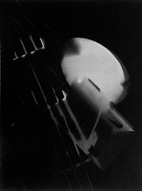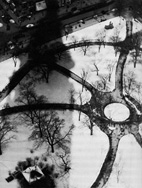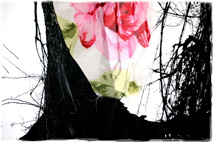 |
|
LASZLO MOHOLY-NAGY
PHOTOGRAM
1926
|
|
 |
|
ALVIN LANGDON COBURN
THE OCTOPUS, NEW YORK
1912
|
|
 |
|
RIEJA VAN AART
Untitled
2006
|
|
|
|
|
The XIXth century saw the birth of photography and subsequently an unequaled number of inventions in this field. More than 450 patents were registered within a few decades, most of them the result of experiments conducted by isolated researchers. Some inventions occurred simultaneously in different countries, the authors unaware of their counterparts achievements. This makes it difficult at times to write the history of this medium.
In 1888 George Eastman associated a silver based emulsion and gelatin on paper. He had thus invented the roll film. With his Kodak Corporation, he had also invented the photographic industry. His idea was to make photography available to the greatest number. No one will challenge the advantages of this decision. Photography's transition to mass market would allow for technical improvements which would greatly contribute to the development of the medium and be beneficial to all its users. But this transition from craft to industry had disastrous secondary effects.
Eastman's motivation may have been humanistic or mercantile but the steamroller of this democratization quickly flattened the enthusiasm that had until then driven a crowd of small and isolated inventive geniuses, depriving them of any possible recognition.
For the public and from that moment on photography was no longer a source of wonderment but a means to record large and small daily events. This documentary function became the only acceptable and accepted definition of photography. The medium is reduced to a “collection of instants”.
The word photographer defines only the one that captures the event, leaving aside the artists who have chosen this technique as a means of expression.
Today the status of Fine Art Photography as part of Photography is still challenged by some theoreticians of the medium. In 1913 the photographer Alvin Langdon Coburn was already writing:
« …why should not the camera artist break away from the worn-out conventions, that even in its comparatively short existence have begun to cramp and restrict his medium, and claim the freedom of expression which any art must have to be alive?» (1)
A century later Fine Art photographers are still excluded or marginalized by some events pretending to be representative of photography.
Today we are again facing a choice that somewhat resembles the manner in which photography was transformed in 1888. The advent of mass market digital photography is altering the common definition of the term “photography”. The near zero cost of each capture, the ease of use and alteration of the files, the profusion of images generated, their questionable preservation with time, the notion of “good” or “bad” images, is fundamentally changing the function of the medium.
One of the first signs of the changes to come is the use by the media of photographs purchased from amateurs who do not have to follow the ethics of the professional reporters.
The disappearing availability of silver based photography products, specially the chemicals, definitely seals the total dependency of photography to the rules of the market.
The role of the professionals and other committed practitioners is to maintain and even raise the level of excellence associated with their means of expression. This aforementioned democratic alternative gives the amateur photographers and the public the possibility to recognize excellence and demand it.
However, we cannot expect the heads of the industry, from George Eastman to Bill Gates, no matter what their field of activity may be, to favor the work of a creative minority at the expense of the mass market. The rules of the economy justify their choices and some of their peers, Henry Ford among others, are well known for not being humanists.
But the “Democratic Utopia” can only survive on the condition that the people as a whole be informed, educated and have easy access to the work of those who push the limits, open unsuspected doors, clear new paths and widen our horizons.
This responsibility rests primarily with the governments and the media, assuming that the latter do not choose to submit to the dictate of the advertisers to whom they provide communication space.
Nontheless the heads of industry (often the advertisers aforementioned) can play a part so that their fields and photography (as well as other forms of artistic expression) blossom simultaneously. They must give their support to initiatives that favor the access by the general public to the creations of the “Explorers of the Arts”.
Only under these conditions, photography will not be reduced to a few simplistic definitions and will finally become a real means of expression and growth for everyone and for all.
(1) in the catalog of his exhibit at the Goupil Gallery in London, quoted in « The History Of Photography » by Beaumont Newhall
|